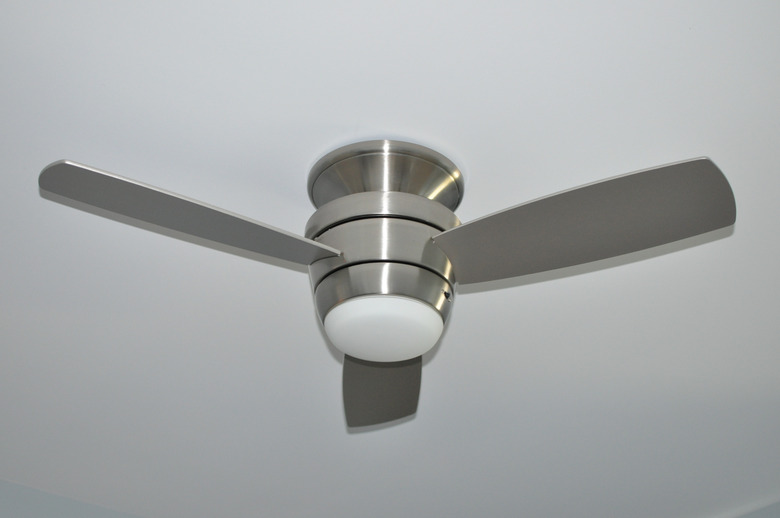Lubricating Bearings On Hampton Bay Ceiling Fans
Hampton Bay fans are made well and last through the oppressive heat of many summers and the chill of numerous winters. However, the older the fan, the more upkeep it requires. An older-model Hampton Bay ceiling fan may need its bearings regularly lubricated. While newer models don't require the oiling process for its mechanisms, caring for the older models is a worthwhile and fairly easy endeavor.
How to Tell if Bearings Need Oil
How to Tell if Bearings Need Oil
Make sure that the model you have isn't the self-oiling type as modern fans don't need regular oiling. Older models tend to have cast-iron housing for the motor or weigh quite a bit more than fans made in the last few decades. If the motor windings are visible when you look up through the vent holes in the motor housing, it's a good indication that the ceiling fan needs its bearings taken care of on a regular basis. An oil hole on the motor means that yes, indeed, the ceiling fan in question is designed to be oiled and needs a regular round of lubrication. It's a good idea to oil the fan annually. If the fan begins to wobble and squeak, the bearings are begging for a dip in oil.
How to Oil the Bearings
How to Oil the Bearings
At the top of the fan's motor, locate the oil hole. Spray a little oil cleaner into the hole—about three spritzes should give it enough lubrication. Wait two hours to let the cleaner do its job. Then, fill the reserve slowly by pouring in about 1 ounce of 10 weight motor oil, just until it peeks out of the top. Wipe excess oil from the motor housing and give the fan a manual spin through four rotations to get the oil deep into the motor's whirring parts.
If the bearings are sealed and therefore inaccessible, you may need to remove the blades and motor from the ceiling in order to add lubrication. Then, remove the casing from the motor to get full access to the bearings. Or, you may be able to avoid further disassembly by finding the small seam where the rotating parts meet the stationary parts on the motor shaft and slowly apply the oil through the seam. Once properly lubricated, return the fan to its bracket in the ceiling and be prepared to start the process over in a year.
Smooth Operation of a Ceiling Fan
Smooth Operation of a Ceiling Fan
Once the bearings are well oiled and the fan returned to its bracket in the ceiling, check that the rotation of the blades is correct. During the warmer spring and summer months, Hampton Bay fans cool the room by rotating counterclockwise. This pushes the cool air down toward the floor. The windchill effect helps those lounging below the fan feel cooler. While some homeowners simply don't use the ceiling fan in winter, the dormant appliance on the ceiling can rotate the hot air that tends to rise to the ceiling back down to the shivering residents of the home below. The fan should rotate clockwise, and no breeze is felt when standing directly below the ceiling fan.
